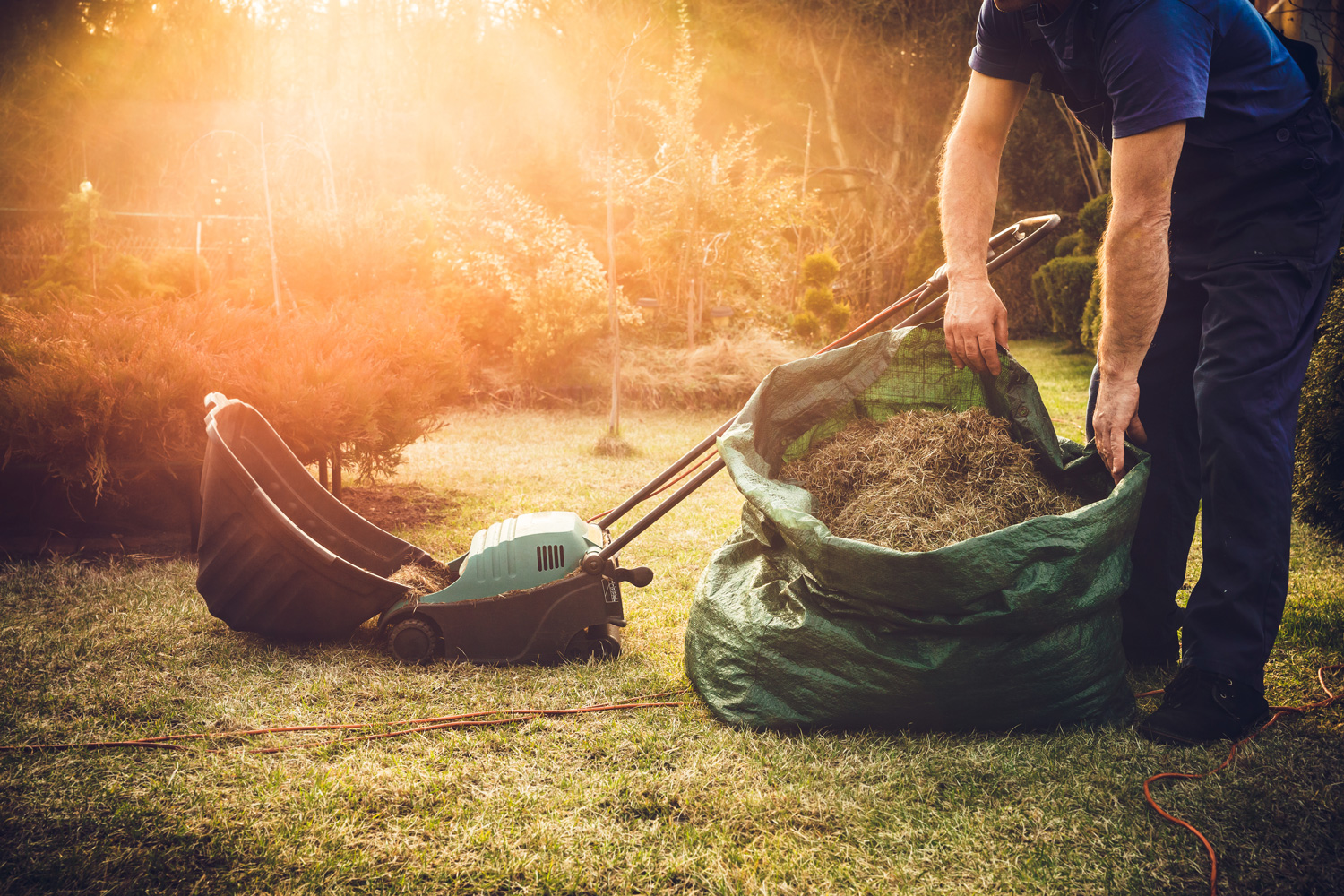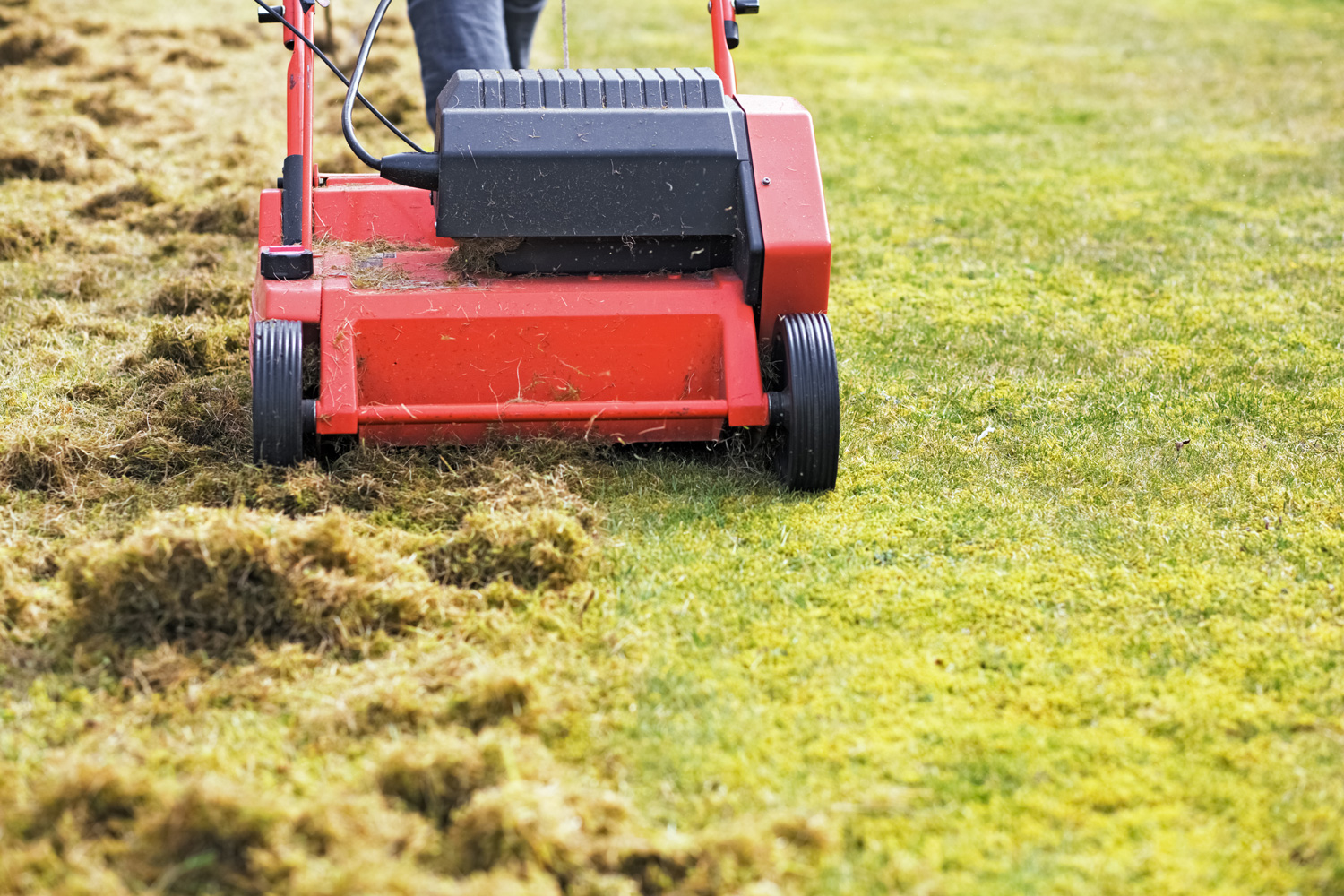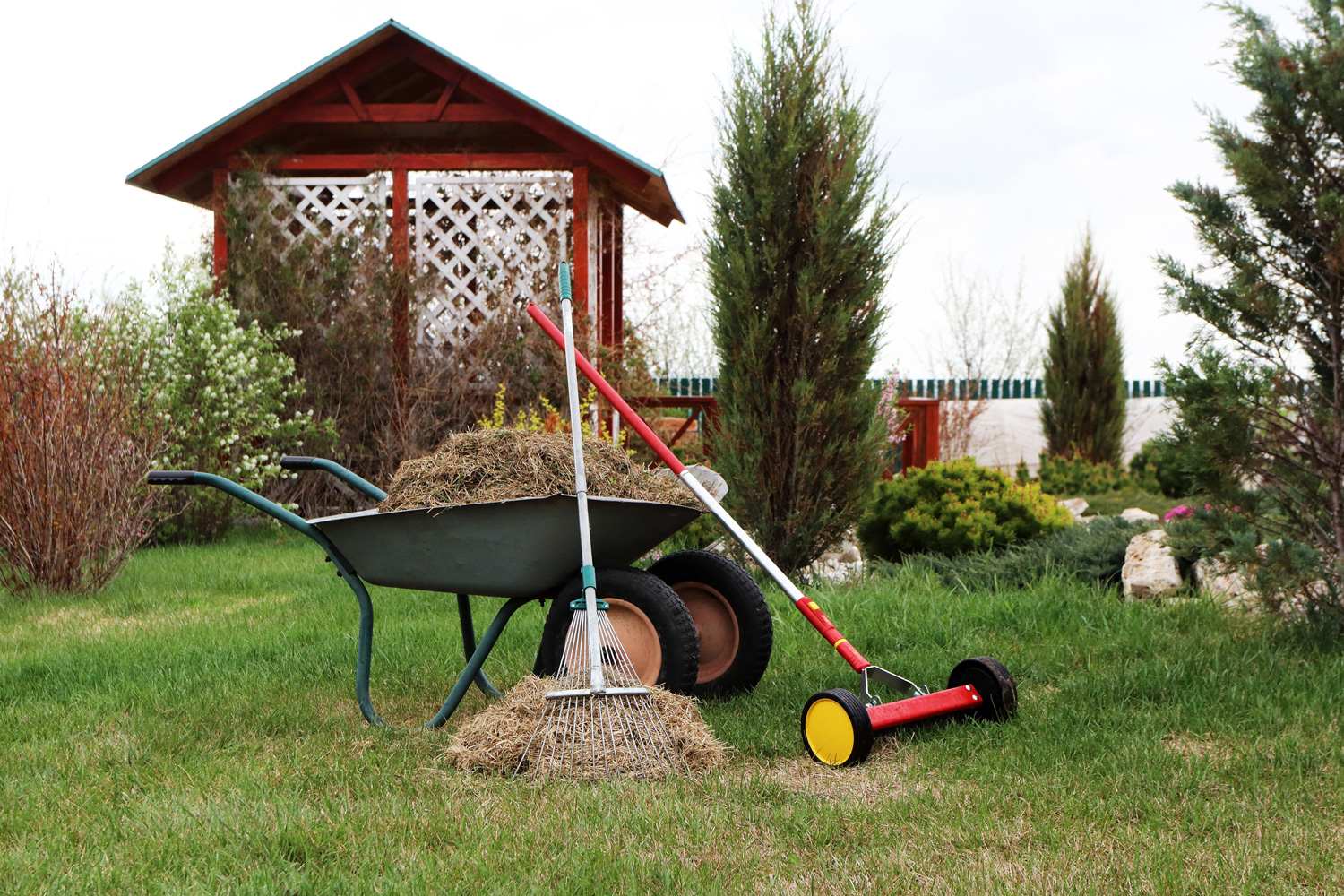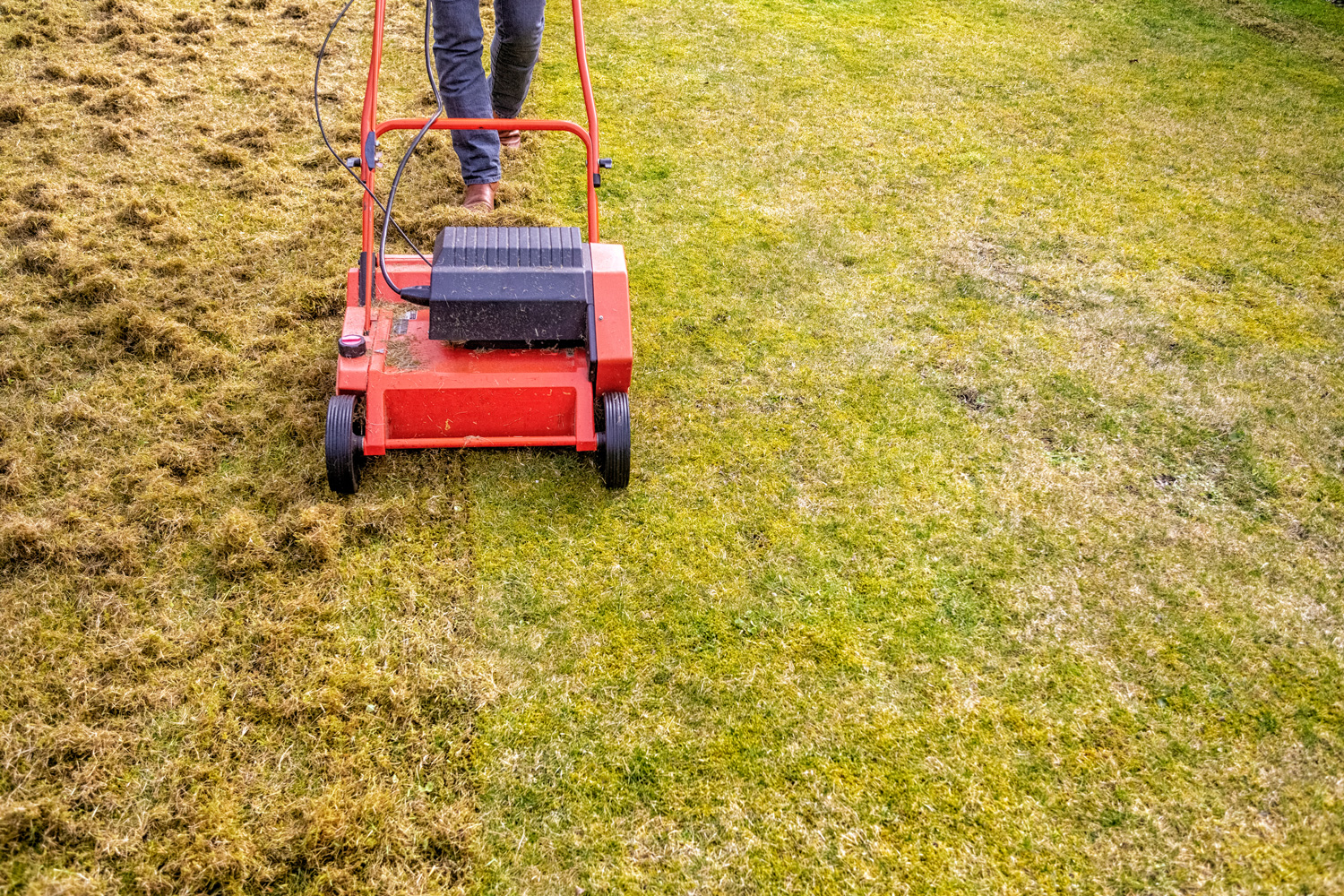Organic matter for the most part is great, but when it builds up into thick layers, it can be troublesome. In lawn care terms, this organic matter is thatch, and too much of this can cause problems to your lawn. We've researched this issue, and in this post, we will talk about dethatching and how to clean up after every dethatching season.
How To Clean Up After Dethatching
- Small lawns: use a leaf rake or a leaf blower
- Mid-sized lawns (up to 1 acre in size): clean up with a push sweeper
- Big and wide spaces (1 acre and above): make use of a pull-behind lawn sweeper
There are many different methods for cleaning up after dethatching, and we know that it might be a little overwhelming to pick which works best for you. Fortunately, we're going to delve deep into this topic, and we will also share with you the best ways to clean up after dethatching. Keep reading because we'll also talk about the benefits dethatching does for your lawns.

How To Clean Up After Dethatching

Dethatching is the manual process of removing the thatch from your lawn every year or so. In lawns, thatch is the layer of organic matter that accumulates around the base of the grass blades, and they create a layer of thatch as time passes by.
Generally, a thin layer of thatch on the lawn is a good way to provide insulation to the grass when temperatures and humidity fluctuate. However, when thatch becomes too thick, it causes issues like lawn diseases, and it can be quite difficult to mow your lawn because of thatch.
A good practice in keeping your lawns green and healthy is by dethatching them once a year if it accumulates quickly or every few years if your lawn is well-maintained. You can do this by hiring a professional, or you can do it yourself by using dethatching tools and machines.
For lawns, you can use a power rake or a slit seeder to attack your thatch problems. They take out a serious layer of thatch and it makes it easier to re-seed your lawn, especially if you are using a slit seeder.
Get this dethatcher on Amazon.
If you have a very big area that you need to work with, it would be best to get professional help. But if you do insist on doing it yourselves, you can typically get away by renting some machines and tools for a day or two. Big areas will need a vertical slicer or a sod-cutting machine.
After the dethatching process, it is important to clean up all the thatch to remove the material that hasn't decomposed. It will also open up the soil to receive more nutrients, allowing the lawn to grow and recover completely. Here are some of the ways you can clean up your lawn after dethatching.
Small Lawns
Even if your lawn is small, if you haven't dethatched the lawn for quite some time, your dethatcher will still pull up a serious layer of this matter. For regular-sized gardens, you can usually get by cleaning up the thatch by using your trusty old garden rake. You can also clean up other garden debris like loose leaves and such while creating a pile of thatch for disposal.
Check out this garden rake on Amazon.
If you're a little pressed for time and you'd like to clean up after dethatching quickly and effectively, you can use a leaf blower. Simply blow off all the loose thatch off of the lawn, and you can clean out your lawn in a few minutes versus over an hour with a lake. The downside with leaf blowers is that you won't be able to build easy-to-dispose piles of thatch.
See this cordless leaf blower on Amazon.
Mid-sized Lawns
Mid-sized lawns can typically be seen in homes and properties that go up to about an acre in size. Since there is more area to cover, using a simple rake or the leaf blower will definitely be harder to manage. To clean up after dethatching lawns of this size, you can use a push lawn sweeper.
A push lawn sweeper is a great tool to have, even if you have a small lawn. They essential push all the loose material into a bag, making clean-up and disposal a breeze. If you are planning to invest in getting your own push lawn sweeper, you'll be happy to know that you can also use this after mowing your lawn, or during the fall when leaves are just about everywhere.
Check out this push lawn sweeper on Amazon.
Big, Wide Spaces
If you have a very big property and you've recently decided that you want to dethatch all that lawn space all on your own, then it would be a good idea to invest in a pull-behind lawn sweeper. Think of it as a super-sized version of the push lawn sweeper, this sweeper will make cleaning up big areas a breeze.
A pull-behind lawn sweeper (or a tow sweeper) is usually attached to a riding lawn mower to pick up grass clippings. One of the benefits of a pull-behind sweeper is that it can pick up bigger items on your lawn like sticks, leaves, pinecones, and of course, loose thatch.
Get this pull-behind lawn sweeper on Amazon.
What Happens After Dethatching Your Lawn?

After you've dethatched and cleaned up your lawn, you might be wondering—what's the next step? Do you simply clean up and leave it like that? Or are there other things that you should do to your freshly dethatched lawn?
One of the things dethatching does is aggravate the grass. After a dethatching session, encourage root growth by deep-drenching the lawn with water. This will allow the roots to take hold of the soil and repair themselves as they recover.
You should also help your lawn recover by laying down a layer of lawn fertilizer. Slow-release urea fertilizer will help nourish recovering roots, while starter fertilizers are great to use if you are planning to overseed. Doing these processes after dethatching will bring back your lawn to its former glory.
What Are The Benefits Of Dethatching The Lawn

Aside from removing that thick layer of thatch and debris from your lawn, you'll be surprised to know that dethatching also brings about a few benefits for your grass. Here are some of them:
Increases Nutrients
Dethatching helps the soil in your lawn get exposed to the sun and air. This will help get the nutrients back into the soil that were originally blocked by the thick layer of thatch.
Effective Fertilizer
Fertilizing your lawn after dethatching allows these plant nutrients to sink deep and get absorbed by the roots of your grass. You'll notice your grass looking lusher and a lot greener than in previous fertilizing sessions because it can now be freely absorbed by the plant themselves.
Improve and stimulate root growth
One of the things that a thick layer of thatch does is block the healthy growth of the roots. Dethatching allows air to circulate into the roots to provide carbon dioxide that is necessary for root growth. If your lawn has been looking a little dull lately, dethatching will surely perk up your grass in no time.
Prepares Lawn for Reseeding or Overseeding
Lawns need to be fixed and renovated every once in a while because of worn spots. Dethatching allows the soil to be fresh and loose for reseeding and overseeding for the next season. This will ensure that your grass seeds will make better contact with the soil, allowing them to successfully germinate.
Improve and Fix Drainage

Dethatching the lawn also helps improve and fix drainage issues. Typically, thatch causes water to pool on the top of the lawn instead of being absorbed into the ground. When this layer of thatch is removed, water can easily drain deep into the soil, and it will generally fix drainage issues in your garden or yard.
Final Thoughts
While it isn't a yearly requirement, it's important to dethatch your lawn once in a while to keep it looking green and healthy. Dethatching your lawn will not only refresh and rejuvenate the grass, but will also help keep your lawn looking pristine, perfect, and well-maintained.
Are you checking out more information on how to make your lawn maintenance better? We've got the perfect articles for you:
How To Make A Riding Lawn Mower Faster
Should You Aerate Before Overseeding A Lawn?





